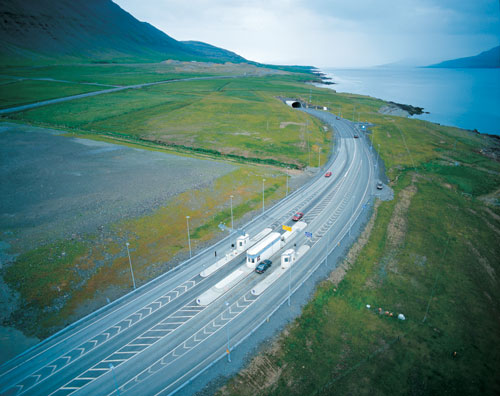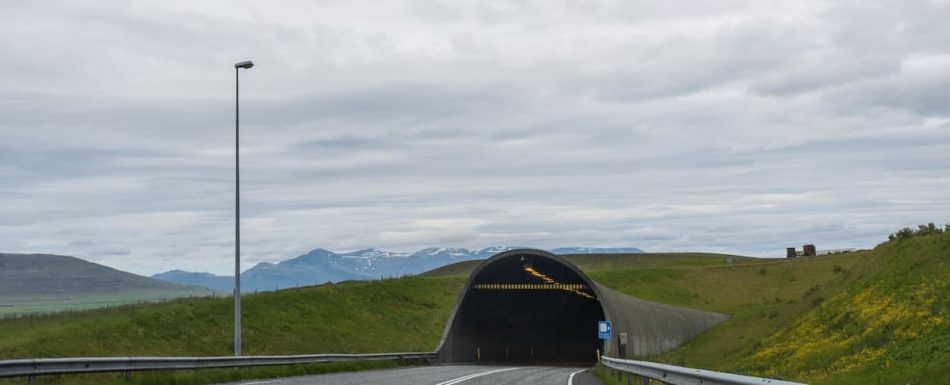The Hvalfjörður Tunnel (in Icelandic: Hvalfjarðargöng) is an under water tunnel cutting through the Icelandic fjord of Hvalfjörður and part of the Ring Road, a highway that circumnavigates the perimeter of Iceland. The Hvalfjörður Tunnel measures 5,770 meters (18,930 ft) in length, of which 3,750 meters (12,300 ft) are below sea level. The lowest point of the tunnel is 165 meters below sea level. By passing under the Hvalfjörður fjord, the tunnel reduces the travel distance between Reykjavík and the north by 45 kilometers. Nowadays, traversing the fjord takes 7 minutes, whereas years ago it took about an hour.
| Location | Western and Capital Region, Iceland |
| Vehicles per day | 11,000 |
| Lowest elevation | −165 m (−541 ft) |
| Max. Speed | 70km/h |
| Length | 5,770 meters (18,930 ft) |
Construction

Spolur was the company that built the tunnel and is now its owner and operator. The tunnel does not allow pedestrians or cyclists, so if you are traveling through Iceland by bicycle, you will have to find an alternative route. Construction of the Hvalfjörður tunnel began in 1996 and was completed in 1998, costing around $70 million. The tunnel was designed for an average daily traffic of about 5,000 vehicles per year. The Hvalfjörður Tunnel was the first underwater tunnel in the world to be drilled through young basalt in a geothermal area. The financing agreements were the first of their kind in the Nordic countries and involved Icelandic and foreign banks and Icelandic pension funds.
Hvalfjörður Tunnel Toll
The tunnel has been toll-free since September 28, 2018. Previously, the toll for vehicles under 6 meters was €10. In the original plan, 20 years were estimated to pay off the total cost of the tunnel, at which point the tunnel would be handed over to the state. However, the traffic volume has been significantly higher than originally projected.
During the design and preparation stages, it was estimated that up to 1,500 vehicles per day would use the tunnel. However, the daily average during the first year was 2,500, 4,500 in 2005, and 5,500 in 2007, as the number of cars in Iceland increased more than expected.
Safety

In 2010, the Hvalfjörður Tunnel received a poor rating from the German automobile club ADAC, which conducts an annual test of European tunnels. Various aspects were criticized, such as the weak lighting system, emergency lighting, and the distance to the nearest fire station.
Turnout areas are located every 500 meters, and the water leakage storage capacity is 2,000 cubic meters. Between 2007 and 2013, several safety improvements were made to the tunnel, doubling the level of safety. Improvements include better lighting, setting up a monitoring system, new emergency lights, and more fire extinguishers.













